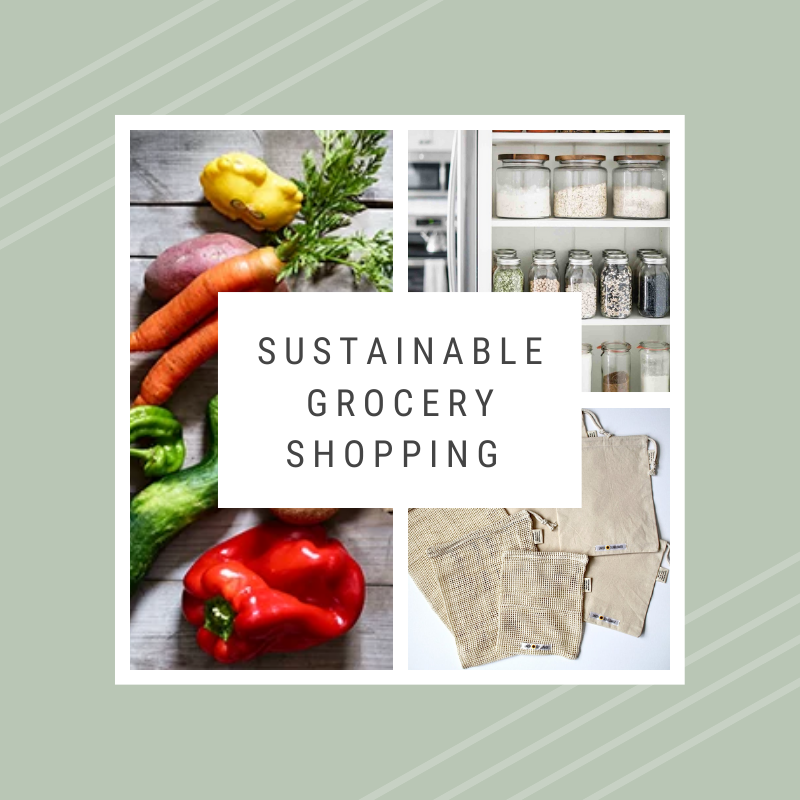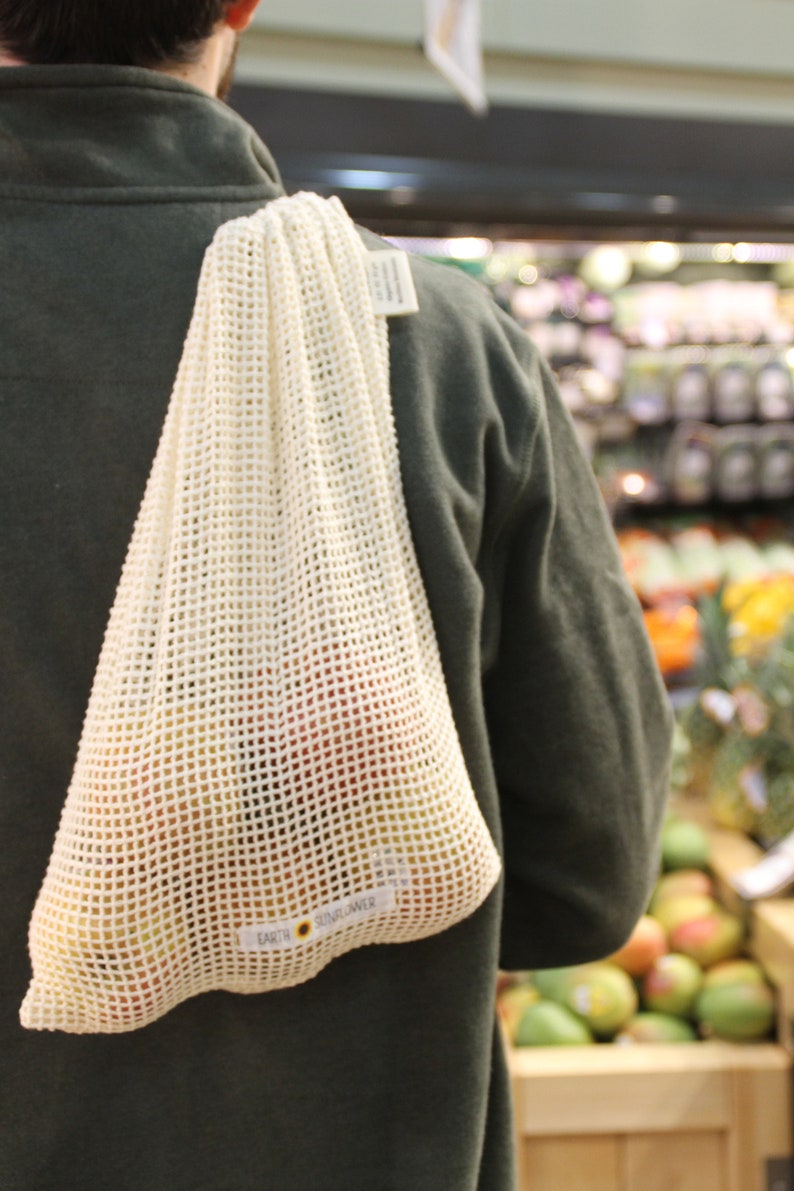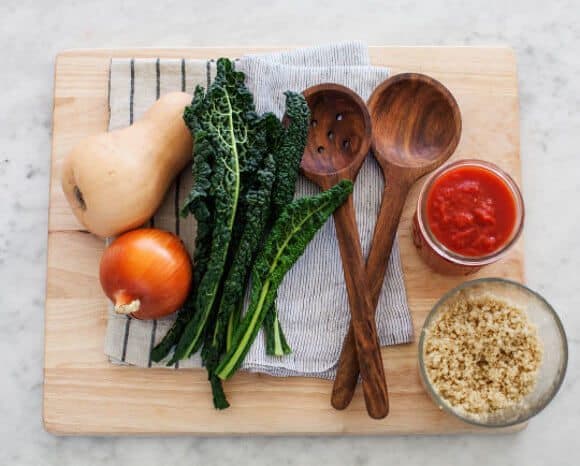Sustainable Grocery Shopping

According to a study published by the University of Michigan, food accounts for 10-30% of a household’s carbon footprint. This percentage includes emissions related to food transportation, meat consumption, and agricultural practices. We must also consider the impact of the packaging of our food, the way we carry it home, and our food waste. There is a lot we cannot control individually in the climate crisis, but we have specific control over our actions in the grocery store.
1.Bring Your Own Bags
This is one of the simplest and most impactful habits to adopt when shopping. Plastic bags are very difficult to recycle because they clog the machines in the recycling facilities. They can easily be mistaken as a jellyfish for hungry marine life. Plastic bags are made of fossil fuels. A handful of states have banned plastic bags or implemented a plastic bag fee. These bans are proven to work, with Washington, DC seeing a 72% reduction in plastic bags found during river cleanup events.
Instead of grabbing plastic bags for your produce and to haul your food to your car, opt into sturdy reusable grocery bags and produce bags. When I forget my produce bags, I like to bask in the spectacle of all my round fruits and vegetables rolling off the counter! If I forget my grocery bags, it becomes a personal competition to see how I can carry all my groceries to my car without dropping something. Sometimes making these choices are an inconvenience, but it’s way more fun if we can laugh at ourselves. Just imagine me chasing my apples down the aisle of registers at Whole Foods ?

2. Observe Your Packaging
It would be amazing if all of us could live near a bulk store and refill our mason jars weekly for a completely package-free grocery shopping experience. If you can, do it!! If you cannot, pay attention to the packaging of the items you are buying. Choose items sold in glass, aluminum, paper, and cardboard. Avoid produce sold in plastic bags. Some stores, like Trader Joe’s and Target, sell most of their produce in non-recyclable plastic bags. If stores with those practices are your only options, it’s even more of a reason to reduce plastic in the other items you purchase. It can be as simple as buying soda in a 12 pack of aluminum cans that come in cardboard packaging vs. soda in a plastic bottle.
3. Consider Alternatives
Have you noticed that most vegetables in the supermarket look exactly the same? This is because grocery store produce has certain aesthetic standards leading to about 25% of produce to either be thrown out or fed to cattle before it even hits the grocery stores.
Misfits Market is a service that collects those rejected, ugly fruits and vegetables from organic farms so you can buy them and reduce food waste! Its an affordable subscription service that allows you to customize the frequency of delivery and amount of produce in the box. This is a fun option for all sized households because it challenges you to use all the fruits and veggies you receive in your box, even the ones you may have never tried before. I had the opportunity to try Misfits produce and the quality is as fresh and delicious as the ones you get in the grocery store.
It can be aggravating to grocery shop for a small household when your produce options come prepackaged in enormous quantities. You end up spending more money to have a bag of vegetables go bad before you, a single human being, can eat them. (I’m looking at you, bag of celery).
At farmers markets, you can typically buy the exact quantity you need of any available vegetable while also supporting some local farms! Farmers markets also make it really easy to have a zero-waste shopping experience. This directory could help you find a farmers market close to you.

4. Maximize Your Purchase
Sometimes, you are forced to buy the bag of celery for a recipe that calls for two stalks. In these cases, give yourself the space to get creative with your veggies.
- Share your excess food with a friend.
- Go grocery shopping with someone and agree to split the cost of your prepackaged produce so both of you can take home more manageable quantities.
- Pickling vegetables is really easy. It prolongs the life of your produce by weeks! I recently pickled some swiss chard stems using this Love and Lemons recipe.
- Cook the vegetable multiple ways so you don’t get bored eating it. I recently overbought kale, so I used it in a soup, in a spaghetti squash dish, in this taco recipe, and then sauteed the rest to eat in omelettes and as a side dish. (I really over estimated how much kale was needed for that soup ?.) On the Love and Lemons website, you can filter recipes by fruit and/or vegetable for inspiration.
- Roast, saute, or otherwise simply cook your produce and then freeze them in individual portions. I got this idea from my friend’s nonna when she bought a few pounds of mushrooms on sale. She sauteed all the mushrooms and then froze them for future dishes! You could even freeze your raw produce.
- Figure out the best way to store your produce to prolong its lifetime. For example, green onions keep best in a shallow jar of water. Check out this comprehensive list to learn more.

I hope these tips inspire you to be a sustainable grocery shopper. Sustainability doesn’t have to be expensive. Practicing simple thoughtfulness during everyday actions will lead to this impactful lifestyle change. Lets encourage others to do the same.
